Before diving into the workshop of this second meetup on the subject of complex enterprises, I’d like to offer you some material. On one hand, a look at this historical element that Laurent relied upon: organizational structures by Mintzberg, and on the other hand an “intimate” look at BENEXT by revealing a document developed last year on a projection of BENEXT on the Dilts pyramid. This document was shared last year with everyone internally, and as time flies by at lightning speed, will be reviewed when we emerge from this “crisis”. This will allow you to gain perspective on our proposed archetypes, and to have a concrete implementation through the “Dilts Pyramid” tool.
The meetup video
And the jamboard shared for the occasion
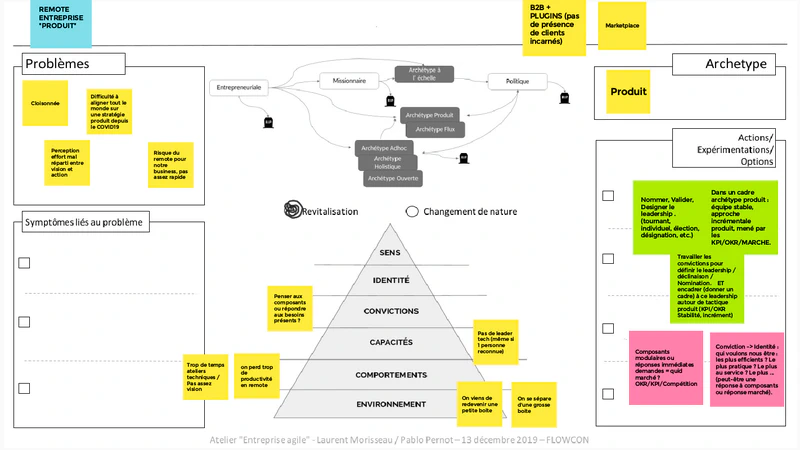
Looking back at organizational structure by Mintzberg
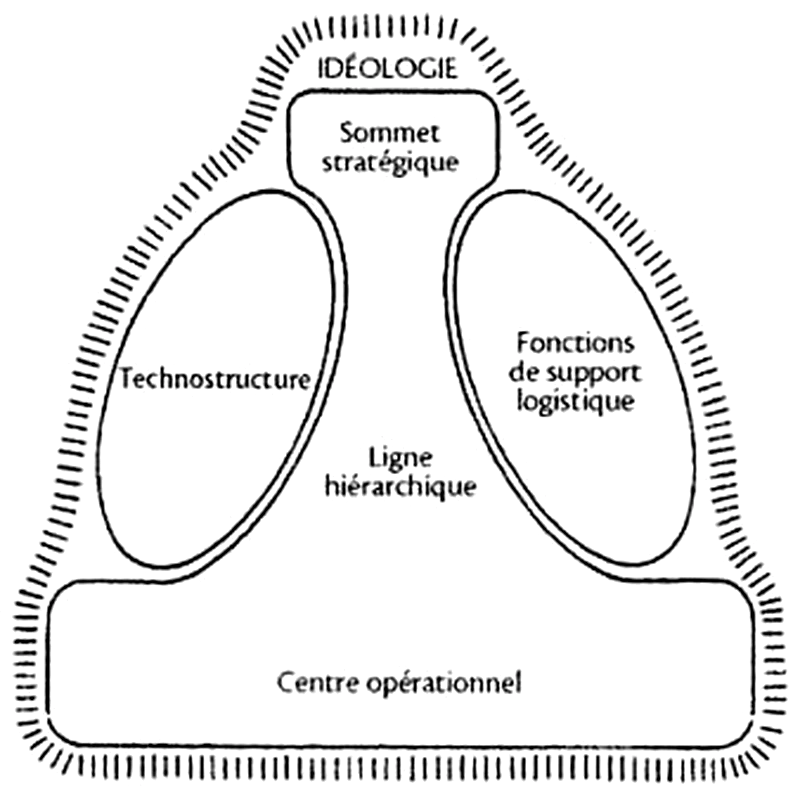
Here is a description of the elements of organizational structures by Mintzberg that served as the basis for Laurent Morisseau’s work.
The elements of structure
I borrowed the words from an article by HRMag, the basic parts of the organization according to Henry Mintzberg
1 - The operating core
At the base of every organization, we find its operators, that is those who perform the basic work of producing goods or delivering services. These operators (men and/or women) constitute what Mintzberg calls the operating core of the organization.
2 - The strategic apex
According to Mintzberg, there is no organization, even among the simplest, that doesn’t require at least one full-time manager to occupy what he calls the strategic apex. It’s from the strategic apex that it’s possible to have an overview of the system.
3 - The middle line
When the organization grows, it then needs more managers — and in this case not only managers to supervise the operators, but also managers to supervise the managers. A middle line is thus constituted, that is, a hierarchy of authority between the operating core and the strategic apex.
4 - The technostructure
As the organization becomes more complex, it requires yet another new group of specialists, whom Mintzberg calls analysts. They too fulfill administrative tasks — planning and controlling the work of others —, but of a different nature, often covered by the term “staff”. These analysts form what Mintzberg calls the technostructure, the latter being situated outside the line of hierarchical authority.
5 - Support staff
According to Mintzberg, a large number of organizations add yet more staff units of a different type, in order to provide various internal services that can range from a cafeteria or a postal service to legal counsel or a public relations department, etc. Mintzberg calls these units and the part of the organization they constitute the support staff.
6 - Ideology
According to Mintzberg, every active organization is finally composed of a sixth part that he calls ideology (this term is equivalent to the term “culture” which is very popular in specialized literature). Ideology according to Mintzberg feeds on an organization’s traditions and beliefs; it’s what distinguishes it from another organization and it’s also what breathes a certain existence into it through the skeleton of its structure. Ideology is represented in the form of a halo that surrounds the entire system.
The different forms of structures
In light of this, Mintzberg observes different forms of structures. I’m taking their descriptions from Wikiversity
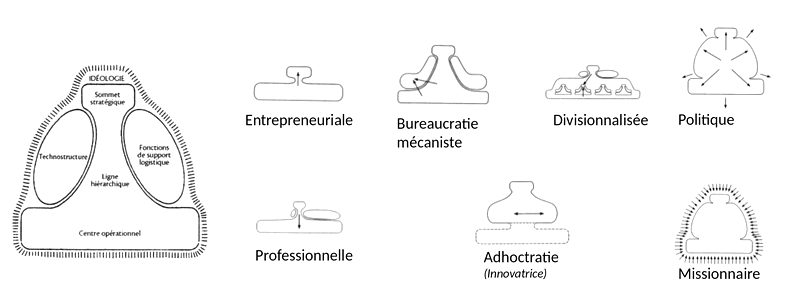
The simple structure
It’s generally a small organization, relatively young where the predominant coordination mechanism is mutual adjustment or direct supervision. Power is very centralized, the middle line is very reduced, even non-existent. The most important component of the organization is the strategic apex.
The machine bureaucracy
It’s found in organizations that are old and of significant size. The adjustment mechanism is standardization. It’s adapted to stable environments (possibility of predicting standards) and simple ones.
The professional bureaucracy
It’s found in organizations where the operating core is composed of highly qualified professionals whose training leads to standardization of qualifications. It’s relatively decentralized due to the room for maneuver that professionals benefit from. The operating core is the most important component of the organization. It’s adapted to stable but complex environments.
The divisionalized form
Very large organizations operating in different markets are generally split into divisions relatively autonomous from one another. The dominant coordination mode is standardization of results. Operational decisions are highly decentralized at the level of each division while strategic decisions are centralized.
The adhocracy
It’s the configuration of innovative organizations. It’s a small organization composed of specialists from different disciplines whose coordination mode is mutual adjustment. The operating core is made up of professionals whose work is not very formalized. It’s adapted to dynamic, unstable and complex environments.
The missionary organization
In this configuration, ideology defines the norms and beliefs that will standardize behaviors and ensure strong coordination.
The politicized organization
It’s an organization where power games between individuals dominate the organization’s functioning. It’s an organization in crisis where the sense of mission is lost in favor of power games. The personal interest of members takes precedence over any other consideration.
Observed life cycle, proposed life cycle, our proposed structures
Here are some thoughts in progress on our proposals for new structures (based on those of Mintzberg), and the associated life cycle. These three stages are a bit like a snapshot of our reflections/evolutions.
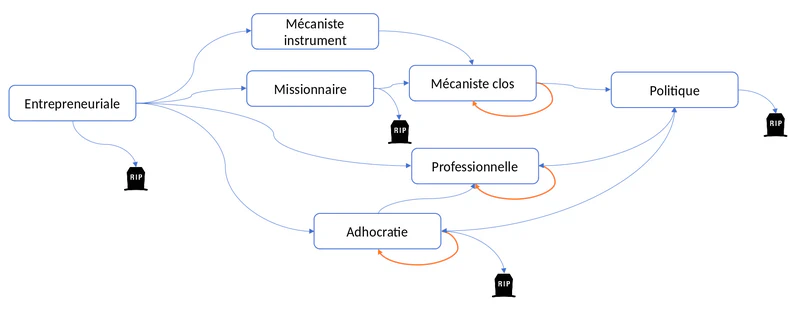
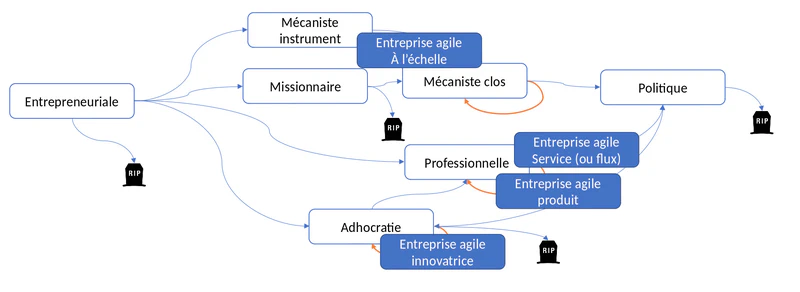
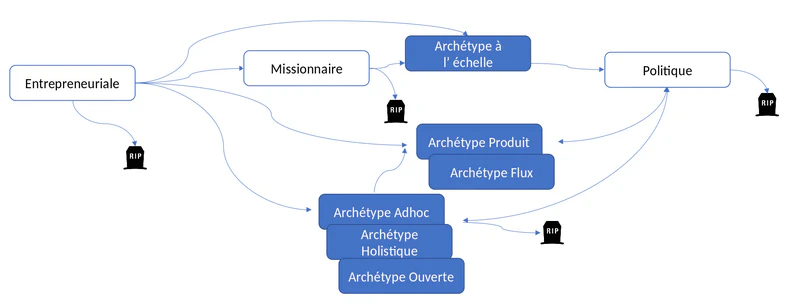
With always therefore this consolidation:
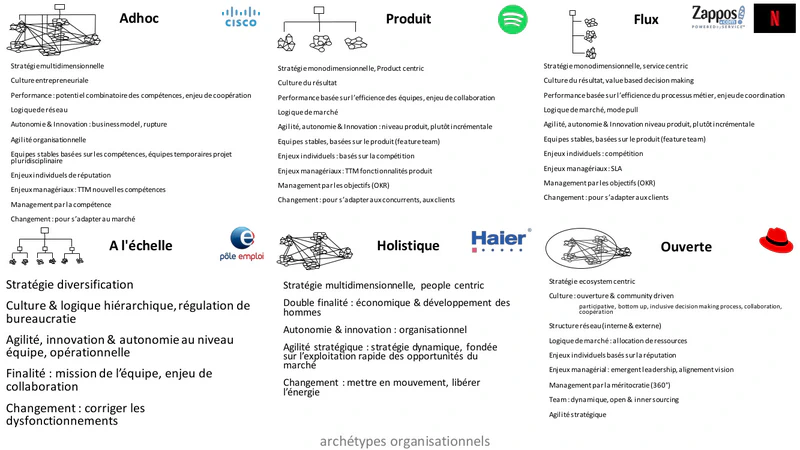
Any resemblance to existing or formerly existing persons is absolutely not the result of chance.
That’s the title we had given to this document from March 2019. I’m sharing it with you “straight out of the mold”, there’s probably some BENEXT jargon in it, our codes. But you’ll find in it an application of the Dilts Pyramid, the mention of a capacity problem to be solved at the level of our convictions. Since then things have moved, and we’ll subject ourselves to the exercise again when we emerge from the “crisis”. Who is “we”? The strategic apex to use Mintzberg’s terms.
This document was shared last year with the entire organization. It’s part of the many ways of thinking and communicating about ourselves, our purpose, etc… (too navel-gazing?).
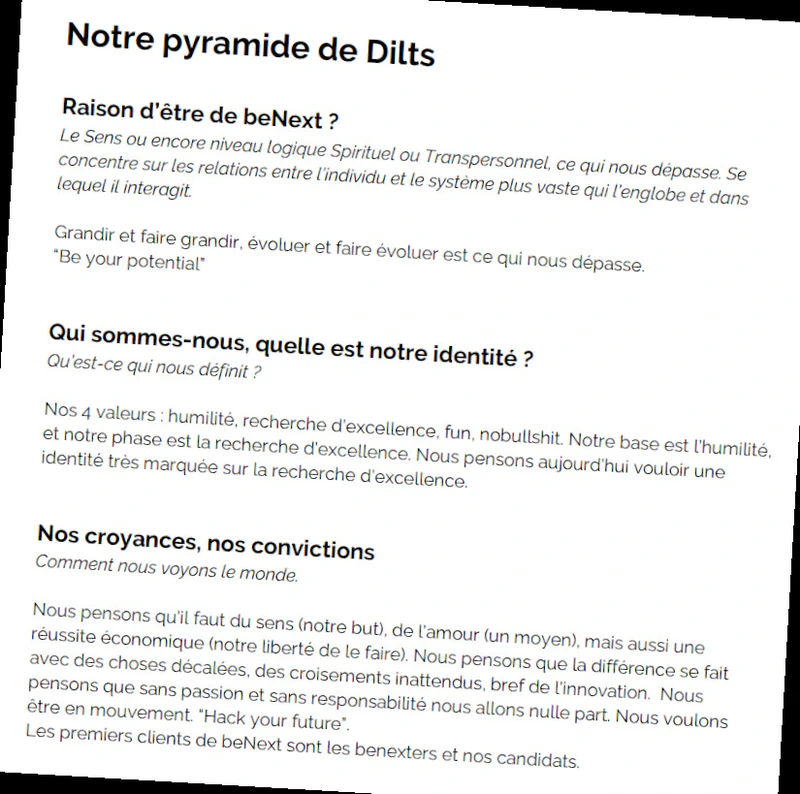
Sources
- The first part on complex enterprises
- The second part on complex enterprises
- Wikiversity on Mintzberg
- HRMag on Mintzberg, 2019
- Organizational forms according to Henry Mintzberg, Alain Dupuis, Richard Déry
- A model for the agile enterprise, by Laurent Morisseau
- Complex enterprises, part 1
- Complex enterprises, part 2
- Dilts pyramid and organization harmonization
- Slides from the 2019 meetup
- PDF file: Any resemblance… on the Dilts pyramid at BENEXT in 2019